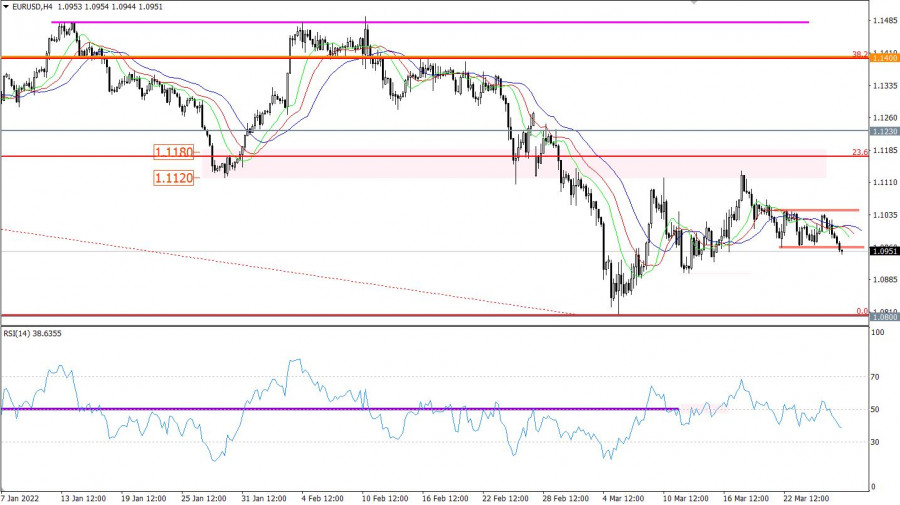
The single European currency closed almost flat on Friday, just with a downtick. To be more precise, EUR was growing in the first half of the day and then reversed downwards. EUR was trading lower in the early hours on Monday. The thing is that EUR is vulnerable to political factors that are setting the tone in the market today. EUR's growth was triggered by Joe Biden's visit to Brussels and the outcome of the EU summit. Policymakers agreed on a new package of formal and insignificant sanctions on Russia. In means that the Kremlin will retaliate with mirror sanctions. It goes without saying that Russia and the EU have thrown good punches on the economies of each other. By and large, the mutual sanctions are set to cause serious long-term repercussions around the global economy. Interestingly, more and more analysts warn that Europe will have to bear the brunt of it. So, the fact that the latest package of sanctions was not as severe as the previous ones is positive for Europe.
Later on Friday, during his visit to Poland Joe Biden made a few remarks that weakened EUR. In his speech, the US President sent a message that the US would step up pressure on Russia not only in terms of sanctions. Even though he did not give a clear-cut remark about actual combat between Russian and Western armed forces, this context is understood. Apparently, such escalation will deal a devastating blow to Europe because the Old World will become a true battlefield. Biden's remarks dampened investors' optimism about EUR.
Moreover, Olaf Scholz made blunt statements over the weekend that Germany is on path to give up Russian energy imports almost in full by the end of the year. The question is how this ambitious plan will be implemented. Indeed, the EU needs an appropriate infrastructure to accept oil and gas from new suppliers.
Available facilities are not able to handle huge oil and gas deliveries from other exporters. Let's assume that the infrastructure is built in no time. Then, the question of high price will take center stage. Oil supplies from more distant exporters and extra expenses on building new facilities will make quiet an expensive price tag. Therefore, energy supplies from Russia would be considerably cheaper. To sum it up, a shift in priorities and in geography of energy suppliers will pump up energy prices in Germany. Meanwhile, the country has to deal with incredible inflation acceleration. The burden of high energy prices will put a strain on the German economy and in turn, on the whole EU. Another point is that the EU has not recovered from the fallout of the COVID-driven crisis yet. So, the outlook for the EU is gloomy. The EU is on the verge of stagnation for a few years ahead. In the worst-case scenario, the EU could slip into a long-term economic recession.
EUR/USD managed to break the lower border of the range of 1.0960/1.1050 where it had got stuck for a few days. As a result, traders increased short positions and pushed the price down. So, a three-week upward correction was followed by the flat market and then by a downward move.
The H4 Alligator completed the intersection stage. Moving averages are now directed downwards. The D1 Alligator indicates a downtrend in the medium term. Moving averages are not intersected on the daily chart.
A downtrend is unfolding on the daily chart. For the time being, the price is making an upward correction from support at 1.0800.
Outlook and trading tips
If the price settles below 1.0960 on the 4-hour chart under such market conditions, this will cement the downtrend. The targets are seen at 1.0900 and 1.0800.
The alternative scenario will come into play in case the price settles above 1.1000. This will create the conditions for the flat market. Complex indicator analysis generates a sell signal for the short term and intraday. Technical indicators also suggest selling in the medium term during the overall downtrend.
